
Four Classics
The bikes are:
- A Dawes Galaxy
- A British Eagle Touristique
- A Nigel Dean World Tour
- A Claude Butler Dalesman
All were built in the UK, before the UK stopped building things. Also, they all have racks and mudguards, though the bikes are not all from the same period. Two of them have 21 gears, the others just 18 for long rides on British country roads. Each bike is a classic model, names that conjure riding across British pastures and moorland, models that are rightly admired in the history of great British touring bikes. Which one would you choose?
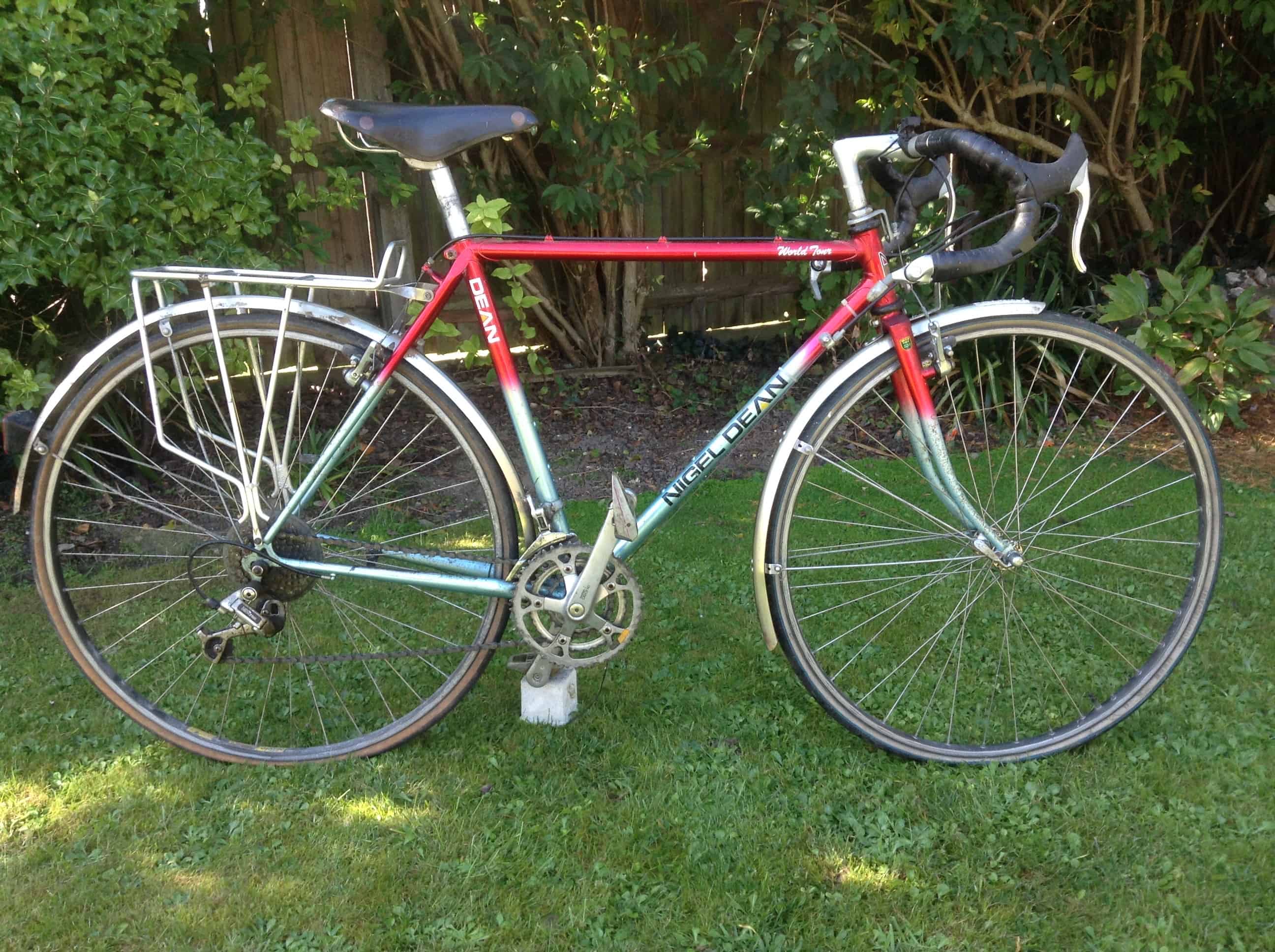
Nigel Dean World Tour
Nigel Dean
This is a World Tour model, built around 1990, I believe, but that’s just a guess. It was too small for me unfortunately, but I liked it a lot. The paintwork is naively done, of good quality ( as it tolerated an intense clean ), and has everything you’d want of a British tourer: a Reynolds 531ST frameset, carefully crafted with braze-ons like the cantilever brake bosses and rear stop, brazed mountings for a rack, eyelets on the dropouts and cool seat lug cluster. Nigel Dean was a professional racer for Holdsworth and during his brief spell of bike building he was known to make small frames with excellent geometry. The only downside with this bike was the oxidation on the forks.


Nice Brake Stop and Rack Mountings
Ye Olde Claude Butler
I’d never owned a Claude Butler before, even though the name is synonymous with vintage British bicycles. This one I bought was unbranded, so I optimistically concluded that it was a Dalesman. You can’t get more of a British sounding bike than that, can you? It reminds me of a man with rolled up trouser legs, riding his bike through a northern English village in the 1950’s to pick up the milk. It’s traditional, so accept that it’s black, heavy and is all about functionality. Actually, it weighs about 30lbs, and is by far the heaviest of the four bikes. Yet, it is bulletproof. A dedicated touring bike, it oozes reliability and dependability.
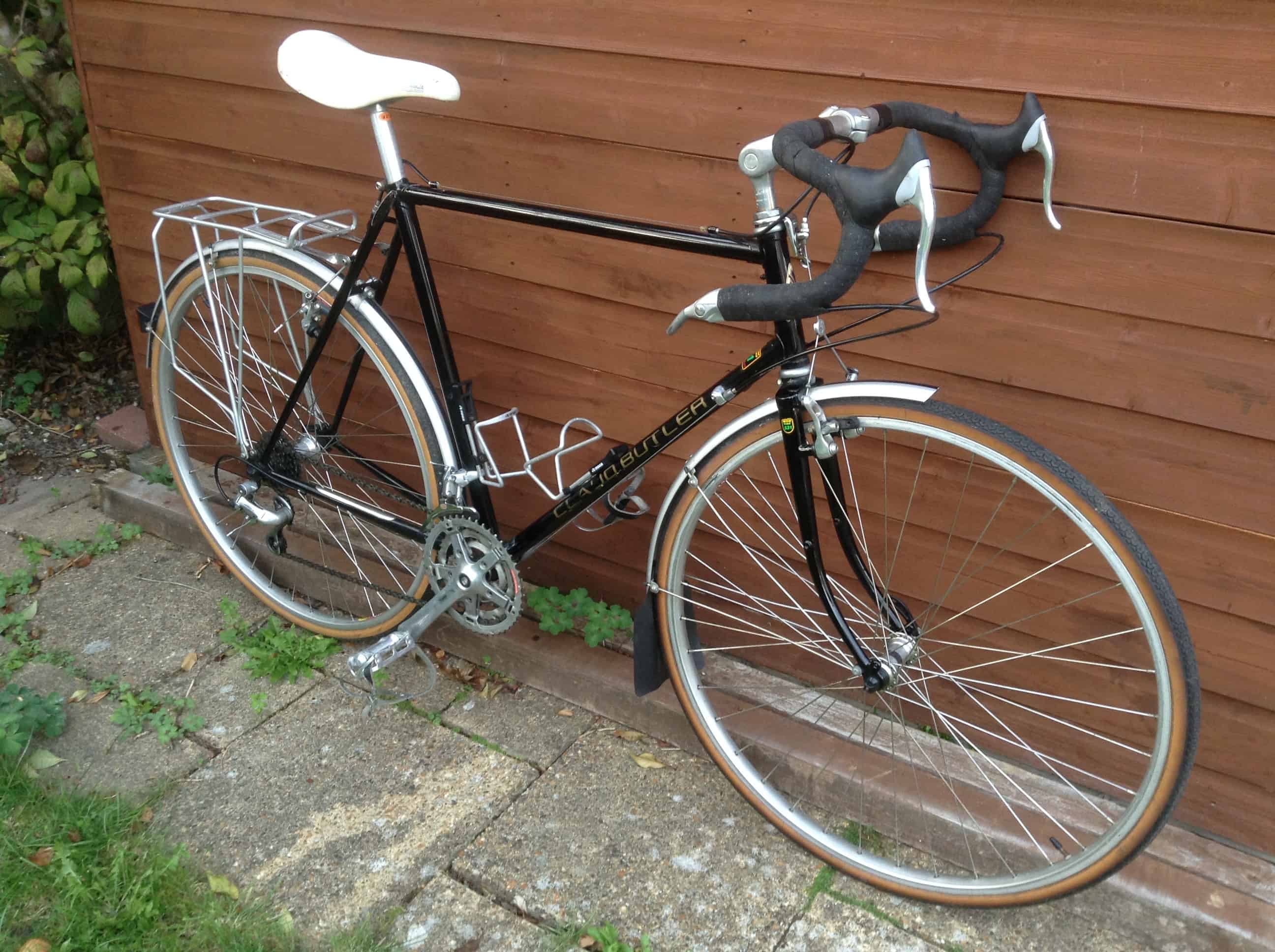
Claude Butler


British Eagle Touristique
Here is a quote from one of the Cycling UK forums on the Touristique:
“The Touristique was by far the most notable bicycle they produced, objectively superior to the Dawes Galaxy of its day, but usually selling for less. It’s a good buy, worth keeping and upgrading. Apart from a few racing models, which never achieved much recognition amongst that fraternity, the rest of the British Eagle range was distinctly undistinguished. One good model was not enough to sustain the business, which ultimately closed”
I reviewed this bike earlier this year, and what a bike. Why the hell did I sell it??
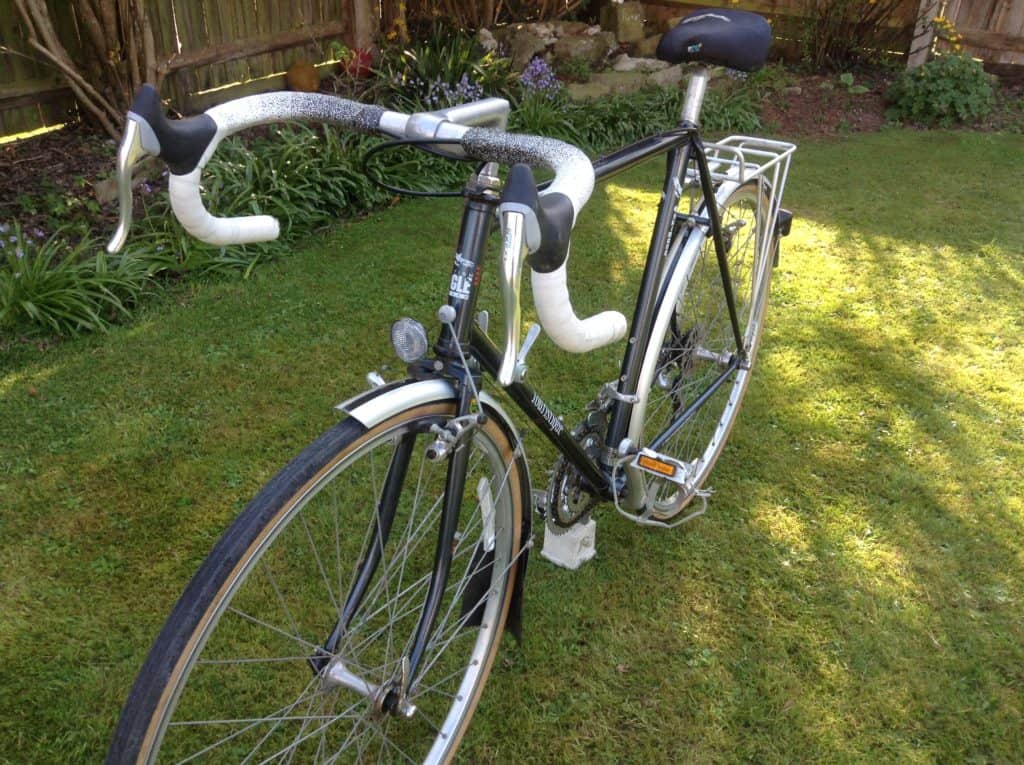
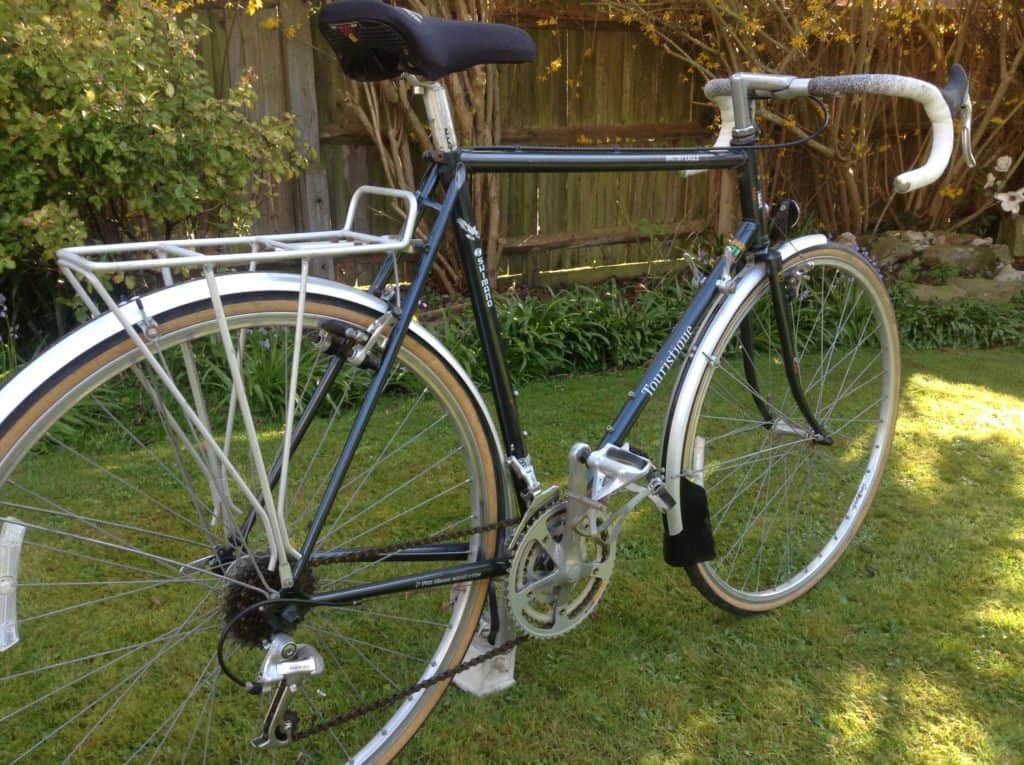
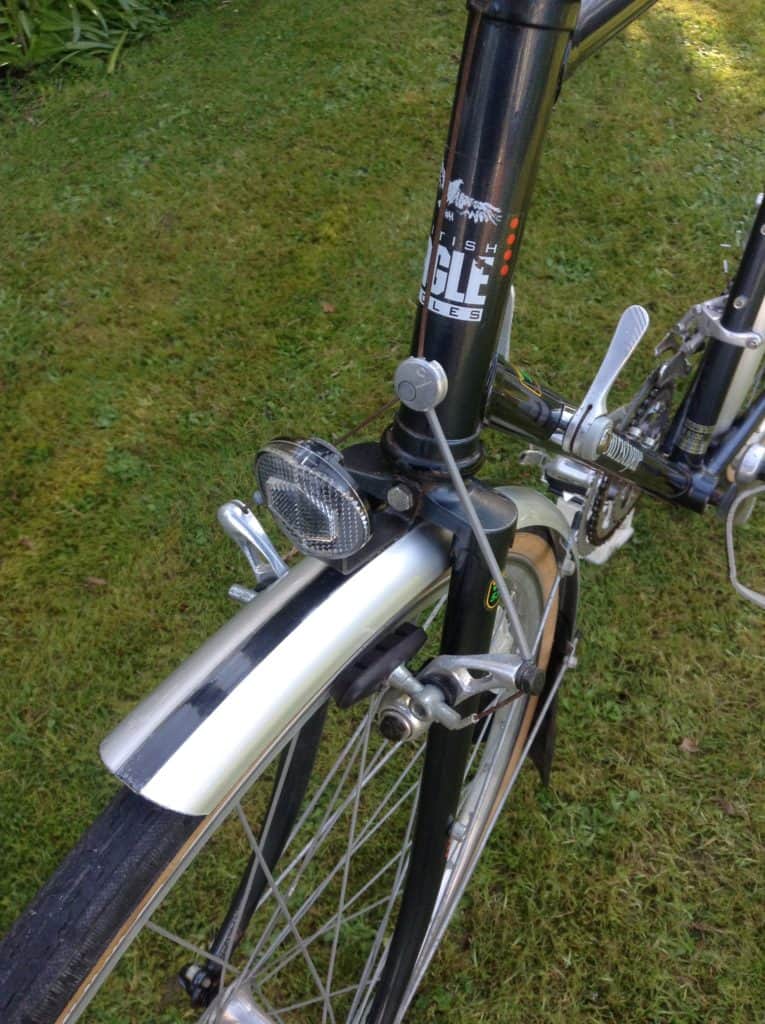
Cantilever Brakes
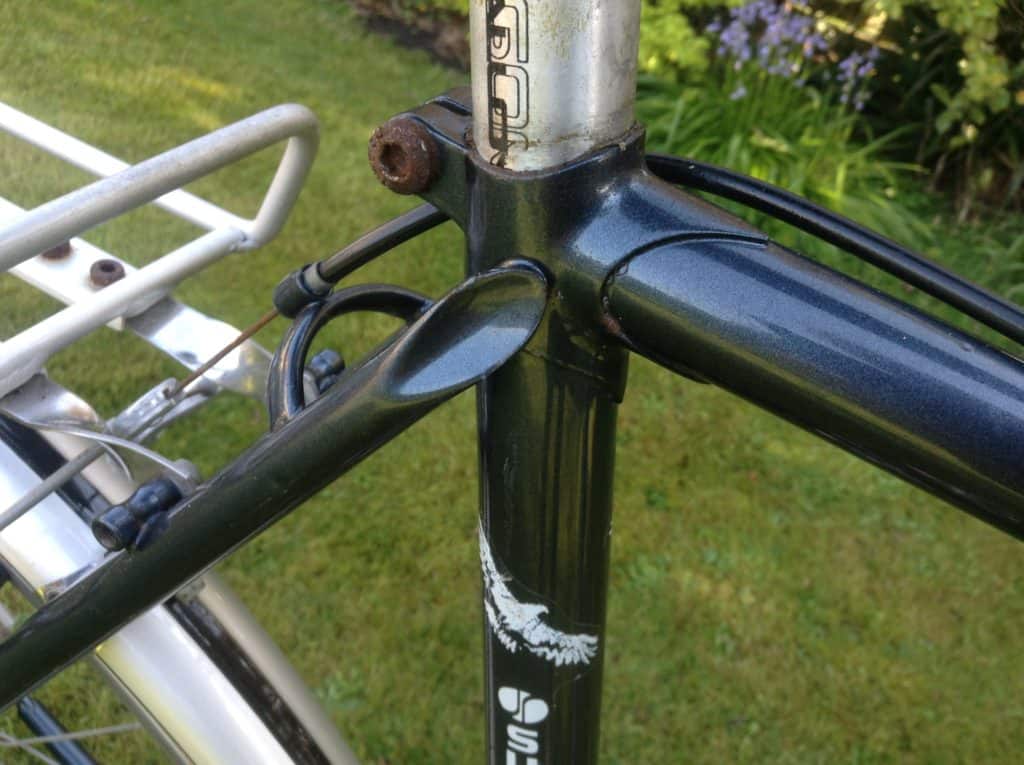
The Seat Lug Cluster
And Something Called a Dawes Galaxy..
The most famous of British touring bikes, something of a legend, yet surprisingly you can pick one of these up for less than £100 in the UK. Purists would perhaps see the Galaxy as the inferior version of the Super Galaxy, which I guess is the real icon of touring on these isles. Yet, the Galaxy is no-nonsense, functional machine that has no pretensions other than to keep you on the road for long hours at a time. It isn’t lightweight, it doesn’t have high end parts, but it has a strong Reynolds touring frame with proper touring frame features, all the braze-ons and bosses that you need for panniers, mudguards, cantilever brakes and of course, a rack. I believe the 1980’s versions are most collectable, but pass on the version like this one I owned; Dawes stupidly swapped out the cantilevers for Weinmann centrepull calipers on those ones.
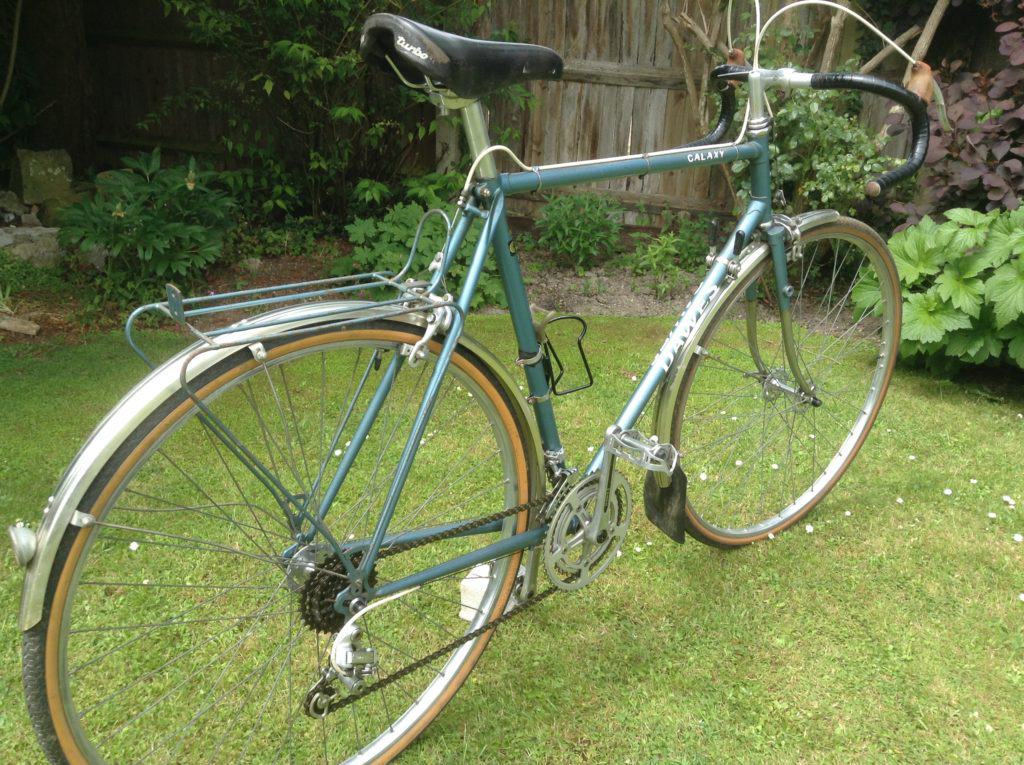
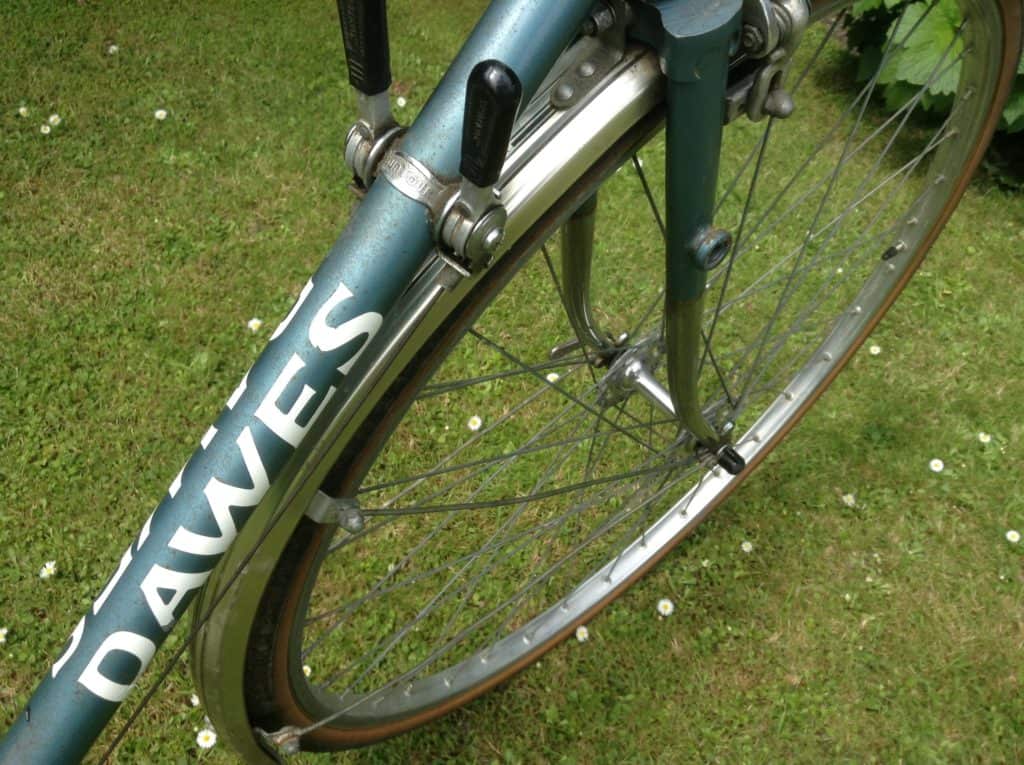
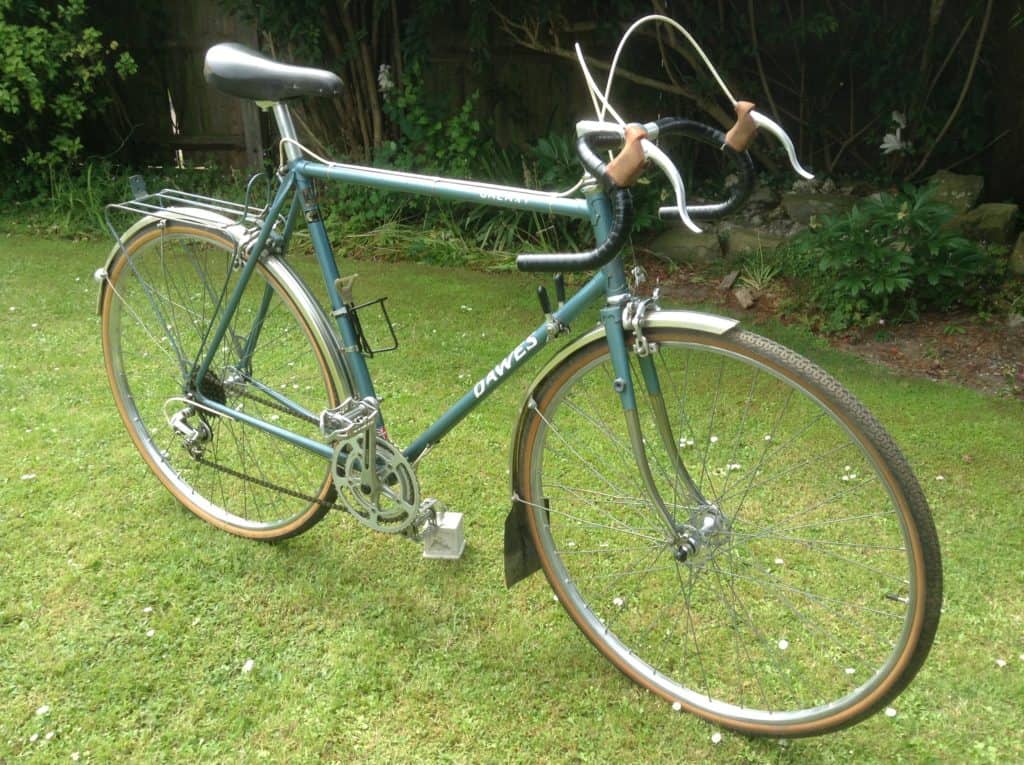
The Winner
Although some would say it would be unfair to compare bikes of different years, these bike do have a lot in common with each other. They were all made in Britain, are steel touring bikes with the same features for long haul riding, and have similar specs and standards in build. In my view, the British Eagle Touristique wins the test: its the smoothest bike on the road, the easiest to ride, and has the best blend of quality, attention to detail and looks. It is lighter than the Claude Butler and has an assured modesty that defines the British touring bike. My only regret about it, is that I sold it.
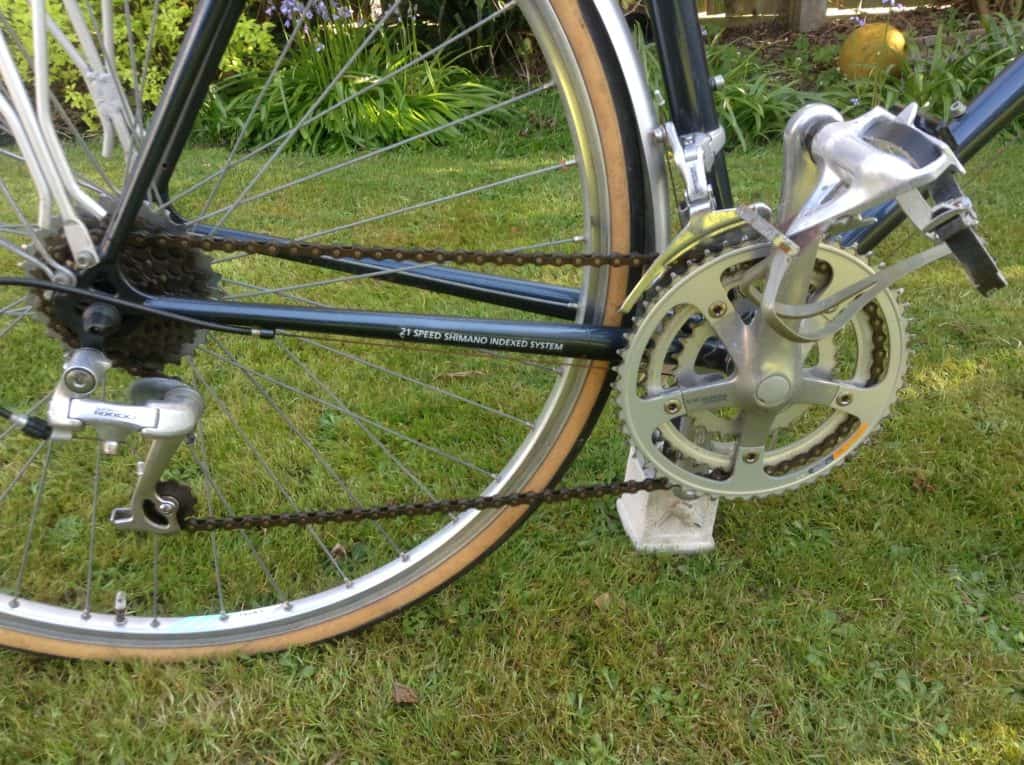
The Drivetrain


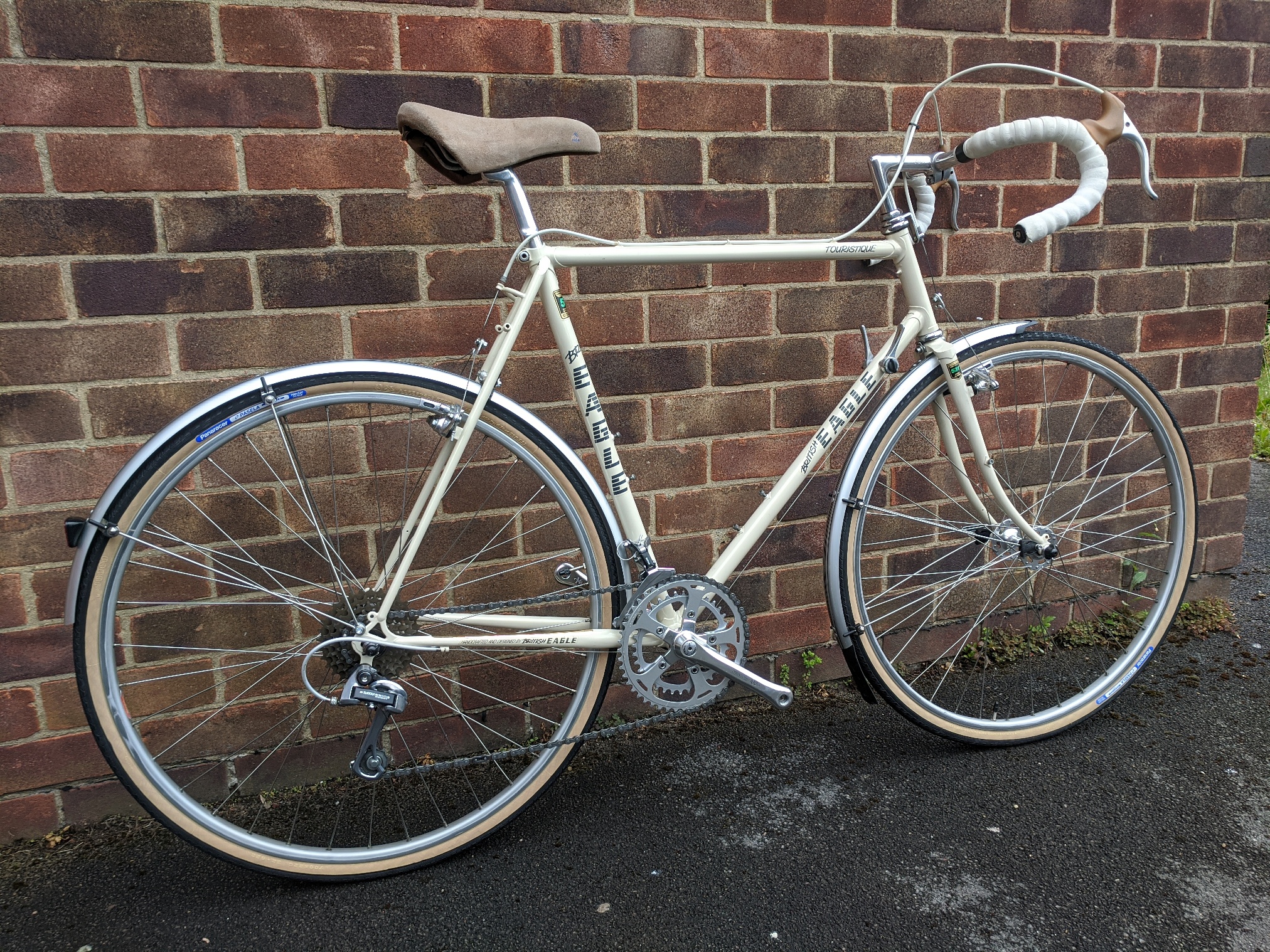
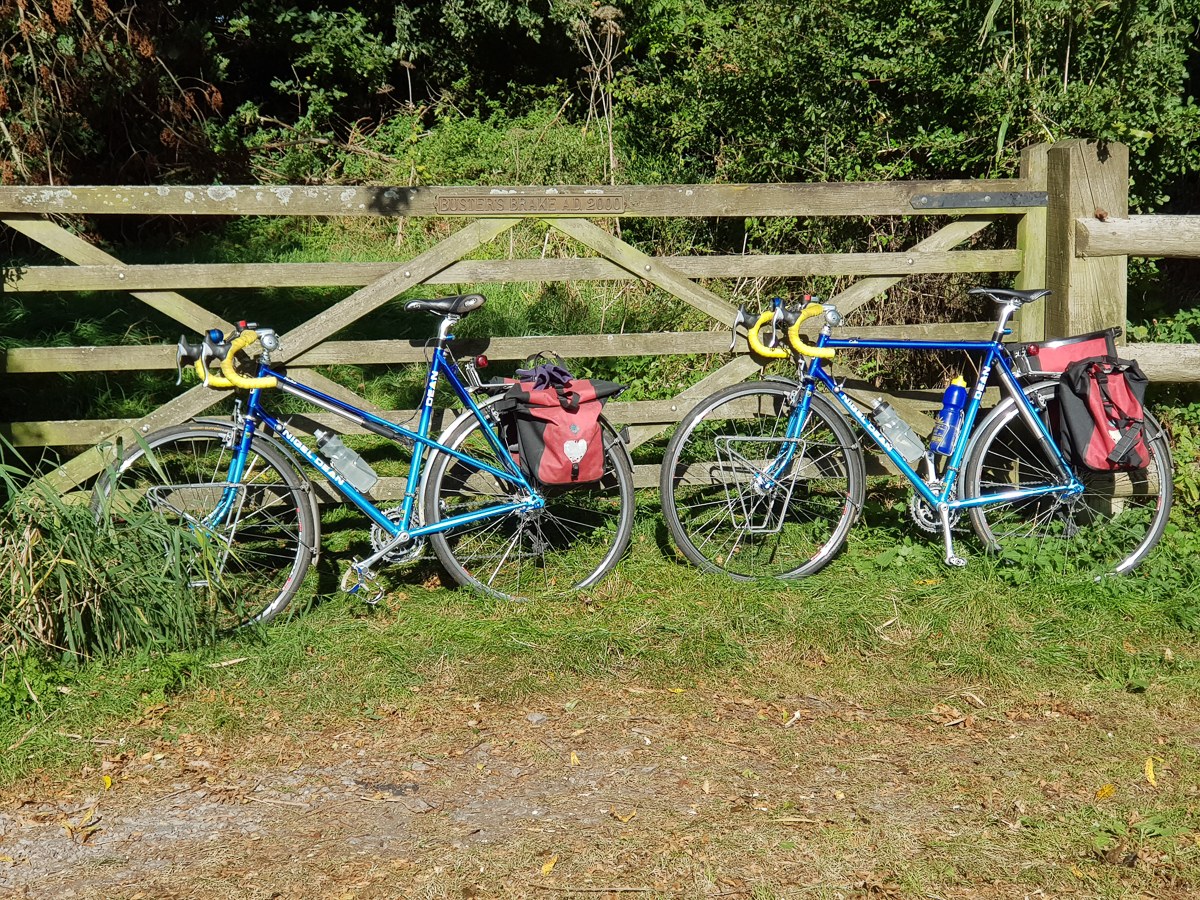
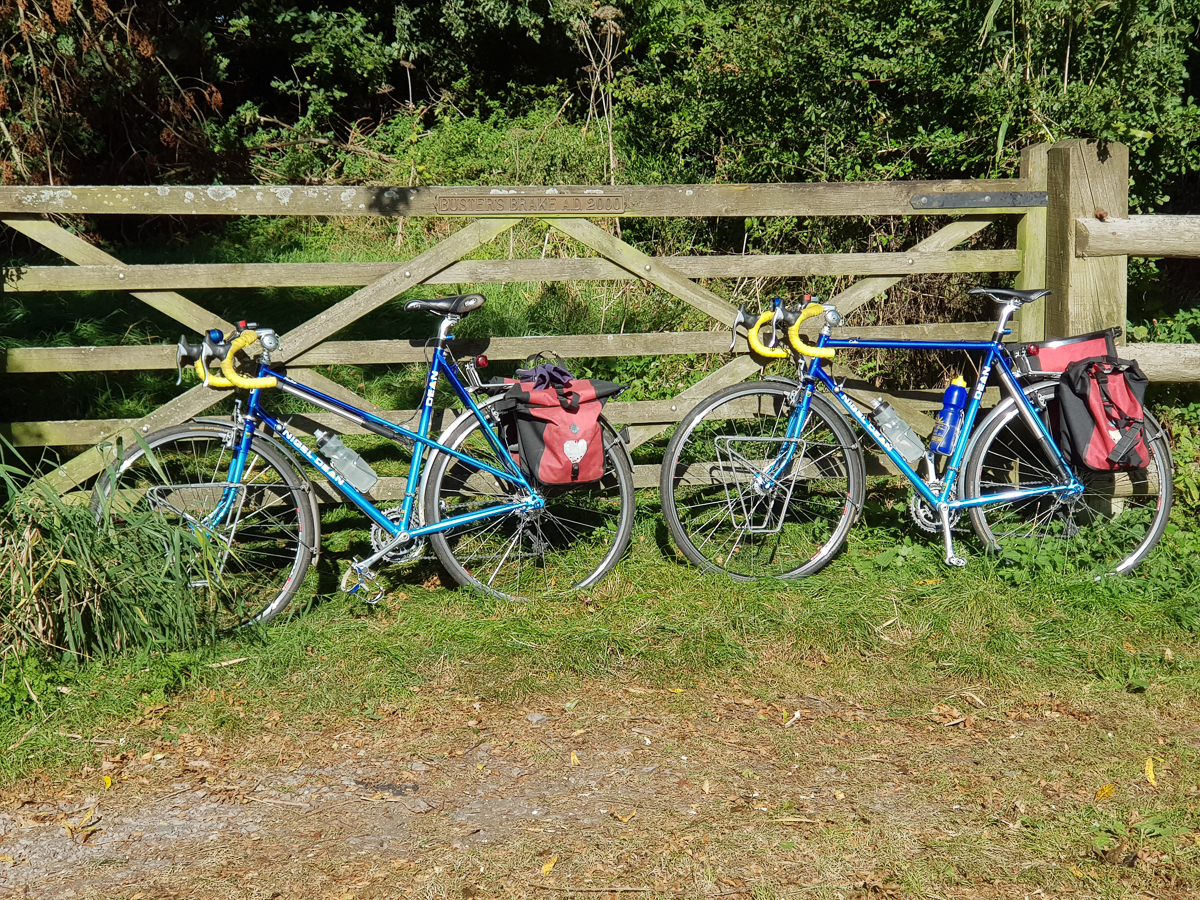
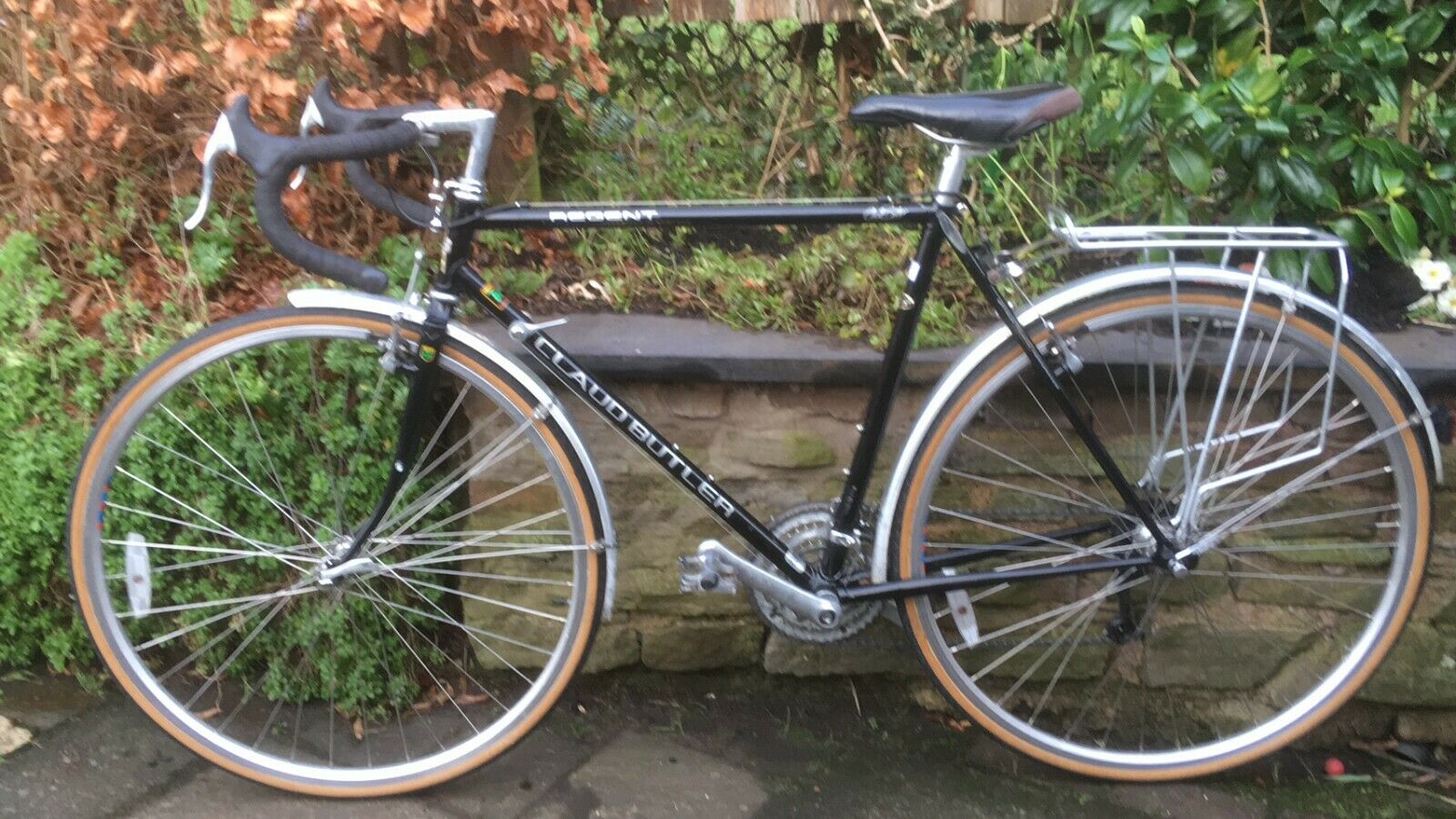
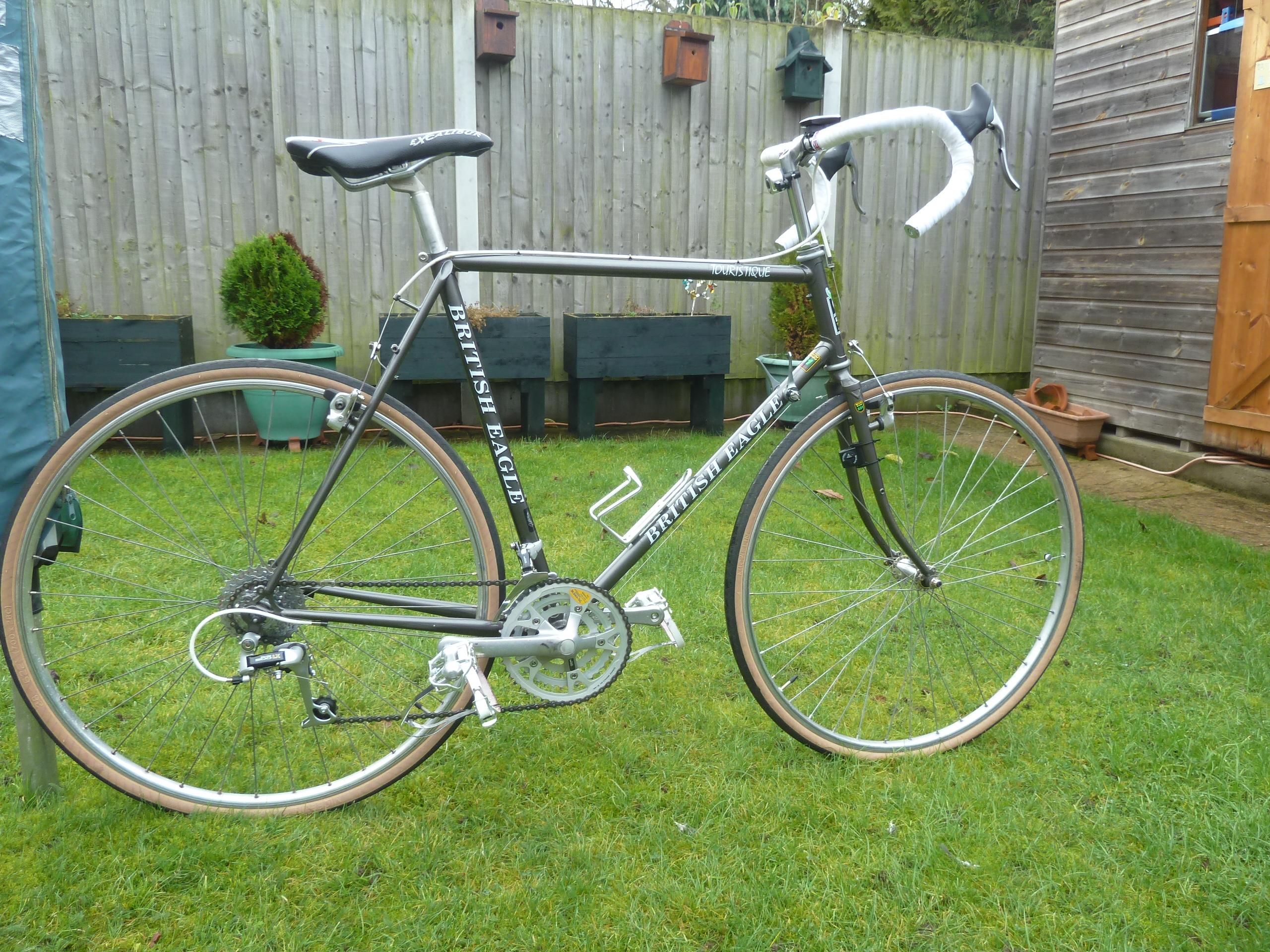
Aaahhh – in the mid ’80s I was living in East Sussex and remember some lovely summer rides on my 531 framed Londoner bike – a re-badged Dawes. Also, regularly rode to Newhaven and caught the ferry to Dieppe for some delightful runs in Normandy.
I was always hankering after a Nigel Dean but never got one.
Great times for touring…
Thanks for your comment Tony, enjoyed reading it. There were some beautiful touring bikes made in that era, and I imagine touring back then was a delight..
They were good times, yes.
Modern touring bikes are made with better steels of course, and many are now fitted with disc brakes too.
But those improvements aside, the basic design of the traditional British touring bike has changed little since the 1950s.
They were good then, and they’re good now.
Happy riding!
I too own a British Eagle Touristique, had mine since the early 80’s, beautiful machine to ride.
Have fitted mountain bike front end to lower the gearing and fitted an 8 speed freewheel.
Will not be selling anytime soon either!
Do not understand why the galaxy has such a blind following, still I like to know I am on the better machine too, each to their own.
I have had a number of Touristiques because they ride well and they are not particularly heavy. I have settled on this one and will not part with it. It is a 1988 in the seemingly rare ivory while pearl metallic.
That’s a great colour, love the bike. Thanks for sharing.
We’ve have a couple of Nigel Dean Tourmaster bikes from new, rebuilt and resprayed (by Argos in Bristol) several times. They’re nice to ride and have taken us to lots of places around the world. The most recent big change has been front hub dynamo lighting (by SON), which is so much better than anything we’ve experienced before.
We have a couple of Nigel Dean tourmasters, repainted by Argos in Bristol several times, and gradually updated over time. They’ve done a lot of miles and been to a lot of places around the world in the past 35 years or so. Very comfortable, very reliable, now something of a source of interest as well.
Thanks, Colin. They look superb, and I’d love to come across another Nigel Dean at some point. They seem the ideal touring bike. Cheers.
The Claud Butler looks like a Black Diamond, an exclusive model made for St Johns Cycles. These were only available in black with gold lettering.
I have a CB Regent, which was one step down from the Dalesman ( more budget SLX groupset and no Brooks saddle). Built in 1998, it was similar to the Black Diamond but was black with silver lettering and lacked bar end shifters.
Oh, and it’s Claud, not Claude!
The Galaxy you’ve depicted is an earlier model, they originally came with centrepull brakes, and a 4O/52 double chainset and 5 speed freewheel… I suspect your one is a c1980-82 model?… triple chainset but pre-cantilever.
This is my British Eagle Touristique.
I bought this in September 2022 and the asking price was £220. I offered £80 not expecting to get it for that but left the offer on the table. Lo and behold 3 weeks later got a phone call saying no other offers and I can have it for £80. Result.
It is, according to the Shimano codes on the wheels and brakes, a 1992 model.
It has a triple Biospace chainring and 7 rear cogs.
An Excalibur saddle which I will replace witk a Brooks B17 eventually.
I have replaced the pedals with MKS Sylvan pedals and Christophe toe clips.
Also replaced the tyres with Michelin amber walls and the handlebar stem. I can’t be riding arse-up and head down anymore.
New items include handlebar tape, bell and trip computer.
I rides lovely. I think it must have been stored for years in a garage because it is in such good condition
Roy’s British Eagle Touriste.
is in amazing condition for a 1990,s bike
I have found some good original bikes but nothing as close to new as that appears.
I hope Roy bags and labels the original components as he replaces them. In case he ever let’s it go
The Touriste must be an amazing bike to ride.
The Super Galaxy I had was brilliant and the concensus on this site is the Touriste was better!
Back in the late 1970s and 1980s l owned a Claud Butler Regent, and later British Eagle Touristique and then a Dawes Galaxy using them for commuting, the weekly shop, weekend rides and touring in the UK and the continent. How l regret selling them due to the demands of marriage, a mortgage and children. Now free of such commitments currently looking for a classic 531 tourer to recapture those halcyon days.
I feel the same regret about selling the Touristique I bought. I should have kept it, and finding another like it is going to be difficult.